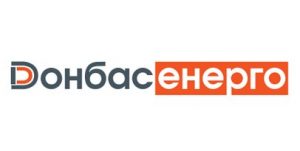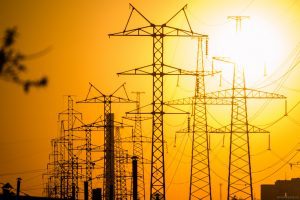
Ukrainian metallurgical enterprises increased the production of total rolled products by 3.5% in January-March 2020 compared to the same period in 2019, to 4.7 million tonnes.
According to a press release of the Ukrmetallurgprom association on Wednesday, April 1, steel production decreased by 3%, to 5.342 million tonnes, pig iron by 2%, to 5.105 million tonnes over three months.
In March, Ukrainian metal enterprises produced 1.560 million tonnes of rolled products (92.1% compared to March 2019), some 1.789 million tonnes of steel (90.9%), some 1.750 million tonnes of pig iron (95.4%).
As reported, Ukraine in January 2020 increased the production of total rolled products by 4% compared to the same period in 2019, to 1.629 million tonnes, but reduced steel production by 2.7%, to 1.8 million tonnes, pig iron by 5, 1%, to 1,698 million tonnes.
According to the results of 2019, the metal enterprises of Ukraine reduced steel production by 1% compared to 2018, to 20.848 million tonnes, production of total rolled products by 1% as well, to 18.387 million tonnes, and iron production fell by 2%, to 20.064 million tonnes.

Donbasenergo Board Chairman Eduard Bondarenko does not expect a significant reduction in demand for electricity generated by Sloviansk TPP, despite the general trend of consumption reduction in the country. “The operator of the power transmission system NEC Ukrenergo, according to the results of March, predicts a drop in electricity consumption in the industry as a whole, at least by 8.2% compared to the same period in 2019. At the same time, customers of Donbasenergo will keep their purchases at the same level, which will allow getting production volumes in April at the level of March,” he told Interfax-Ukraine.
As reported, the operator of the power transmission system NEC Ukrenergo predicts a decrease in electricity consumption in Ukraine in March amid quarantine measures by 8.2% compared to the same period in 2019. In addition to quarantine measures, in which the operation of a number of enterprises in different economic sectors is restricted, electricity consumption is also reduced due to warm weather.
Electricity consumption in Ukraine in January-February 2020, taking into account technological losses in networks, decreased by 5.1% (by 1.451 billion kWh) compared to the same period in 2019, to 26.999 billion kWh excluding technological losses by 4.8% (1.63 billion kWh), to 21.29 billion kWh.
Electricity production in the unified energy system of Ukraine in January-February 2020 decreased by 7.5% (by 2.204 billion kWh) compared to the same period in 2019, to 27.318 billion kWh.
Donbasenergo owns Starobesheve (located in the occupied territory) and Sloviansk TPPs with the total installed capacity of 2,880 MW, in particular the capacity of Sloviansk TPP is 880 MW. At the end of March 2017, the generation company announced the loss of control over Starobesheve TPP, as well as part of structural units located in the temporarily government uncontrolled territory.
PJSC Energoinvest Holding owns 60.86% of the shares of Donbasenergo, another 25% of the shares of the generating company are owned by the state. Currently, Maksym Efimov is the head of the company.

The electricity prices for industrial consumers in Ukraine are two times higher than in Eastern Europe, according to the data of the Market Operator as of April 1, 2020.
According to the following websites https://www.oree.com.ua/ and https://www.nordpoolgroup.com/maps/#/nordic, in particular, the base cost of electricity for Ukrainian industrial consumers is EUR 51.01 per MWh, for Polish is EUR 30.23, for Romanian is EUR 25.69, for Hungarian is EUR 25.78, and for Slovak is EUR24.1.
The cost of electricity for daylight hours in Ukraine is EUR 58.85 per MWh, while in Poland it costs EUR 31.7, in Romania and Hungary is EUR 26.81, in Slovakia is EUR 24.35.
According to Nord Pool, the European power exchange, the tariffs are even lower in Western Europe. Thus, the cost of electricity in Benelux is EUR 22.5 per MWh, in France is EUR 21.86, in Germany is EUR 19.95.
The countries of the Scandinavian Peninsula, under support of national economies during coronavirus disease (COVID-19) outbreak, reduced electricity prices to minimum levels. Thus, the tariffs in Norway, Sweden and Denmark dropped to EUR 4.58 per MWh.
As Ukrainian industrial company Interpipe said earlier on Wednesday, April 1, in the last week of March in Ukraine rise in price of electricity for industrial consumers was recorded, while the tariff increased from UAH 1.3 per kWh to unprecedented UAH 1.68 per kWh, or 35% compared to February.
At the same time, Interpipe urged Prime Minister of Ukraine Denys Shmyhal and the National Energy and Utilities Regulatory Commission to take the necessary regulatory measures to stabilize the electricity market. The government needs to take measures to prevent the rise in electricity prices by one of the key market players – National Nuclear Generating Company Energoatom, the group said in a statement.
“Amid COVID-19 pandemic, the governments of Europe and the United States are developing plans to support industry, introduce additional tools to stabilize the business. The situation is opposite in Ukraine. We, as a business, solve the problems of transferring employees, providing them with protective equipment, and purchase equipment for local hospitals. All this is amid falling volumes of orders. In response, we get a 35% increase in electricity prices and, as a result, a significant deterioration in our competitiveness in the falling market,” Interpipe Chief Financial Officer Denys Morozov said.
Interpipe is one of the ten largest manufacturers of seamless pipes in the world, is the third largest producer of seamless-rolled railway wheels in the world.
Interpipe incorporates five key assets: PJSC Interpipe NTRP, Interpipe NMPP, Interpipe NIKO TUBE, Interpipe VTORMET, and Interpipe STEEL.

The volume of construction work in Ukraine in February 2020 decreased 2.8% compared with February 2019 and amounted to UAH 15.7 billion.
According to the State Statistics Service, in February, the volume of construction work increased by 11.1% compared to the previous month (according to the seasonally adjusted data, it decreased by 2.7%), while compared to December 2019 this figure fell by 8.7%.
According to the statistics agency, in February 2020 from February 2019 the volume of work increased in non-residential construction and decreased in residential and engineering. According to unadjusted data, the growth in non-residential construction was 12.5%. The reduction in construction volumes in building engineering structures amounted to 8.7% and residential construction some 0.2%.
At the same time, the share of new construction in the total volume of completed construction works amounted to 48.8%, repairs to 24.7%, reconstruction and technical re-equipment to 26.5%.
In January-February 2020 compared with January-February 2019, a decrease in the volume of construction work was recorded in nine regions, in particular, in Sumy (by 30.1%, to UAH 143.2 million), Odesa (by 29.4%, to UAH 814.6 million), and Luhansk (by 18.7%, to UAH 31.7 million).
The largest growth in construction work in January-February was recorded in Rivne (by 43%, to UAH 258 million), Kirovohrad (by 33.8%, to UAH 145 million), and Ivano-Frankivsk (by 33%, to UAH 293 million) regions.
The volume of construction work in Kyiv in January-February 2020 fell by 0.9% and amounted to UAH 4 billion.
The data are given excluding the occupied territory of Crimea and the temporarily occupied territories in Donetsk and Luhansk regions.

The costs of agricultural production in Ukraine in January-February 2020 decreased by 7.2% compared to the same period in 2019.
According to the State Statistics Service, the cost of producing crops in January-February fell by 7.8%, livestock products by 6.8%, material and technical resources of industrial origin used in agriculture by 8.4%
At the same time, according to the State Statistics Service, the cost of agricultural production in February compared to the previous month increased by 0.2%. Thus, the costs of crop production decreased 1%, livestock production increased 3.2%, and material and technical resources decreased 1.9%.
As reported, the cost of agricultural production in Ukraine in 2019 decreased by 0.64% compared to 2018.

The European Bank for Reconstruction and Development (EBRD) has provided a four-year loan of EUR7.5 million to Bank Lviv for lending to small and medium-sized enterprises (SME) under the EU4Business program, Anton Usov, the EBRD senior adviser on external affairs, has said.
“Small and medium-sized enterprises in western Ukraine will benefit from a new loan of up to EUR7.5 million to Bank Lviv provided under the EBRD EU4Business credit line. The loan will be available for disbursement in the Ukrainian hryvnia, which will protect Bank Lviv’s borrowers from foreign currency-related risks, and offer long maturities,” the EBRD noted.
“The funds are provided in the context of the Deep and Comprehensive Free Trade Agreement (DCFTA) between the European Union (EU) and Ukraine. EU grants will be offered as investment incentives to eligible enterprises to reduce the cost of their capital expenditure on upgrades of technology and production processes to comply with EU standards and regulations,” it said on its website.
Bank Lviv is a regional bank providing banking services to SMEs and private clients across western Ukraine. It is well established in Lviv, Ivano-Frankivsk, Lutsk, Rivne, Ternopil and Uzhgorod regions, as well as Kyiv.
The EBRD is a leading institutional investor in Ukraine and to date has committed more than EUR14.54 billion in over 460 projects to the country.